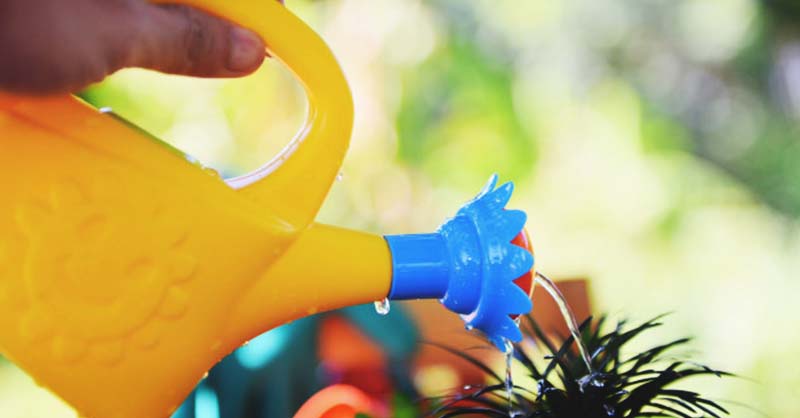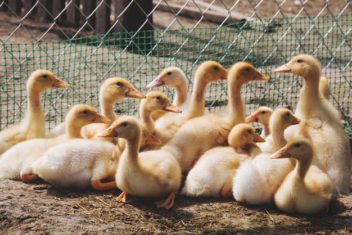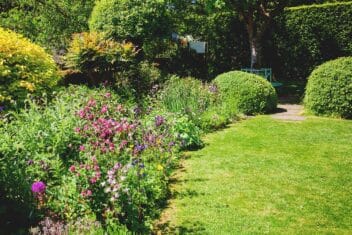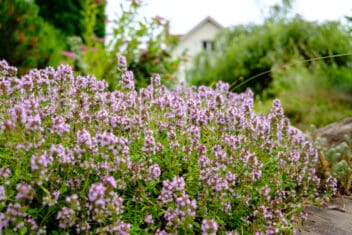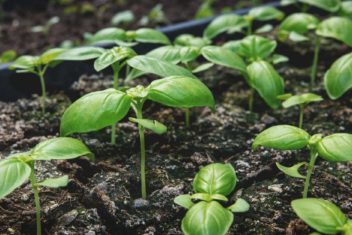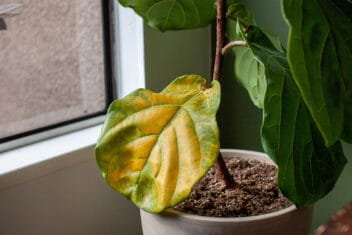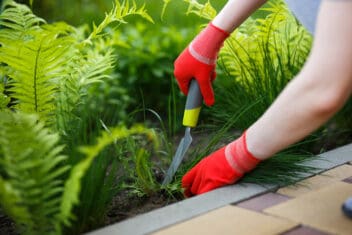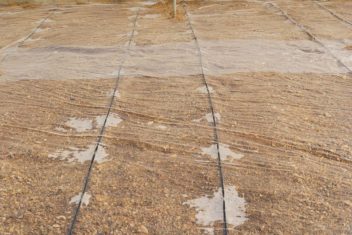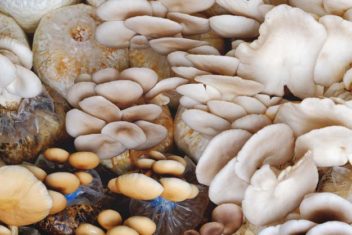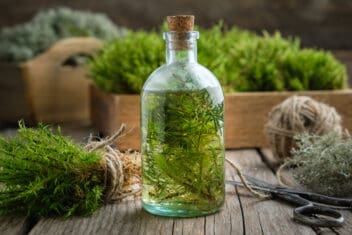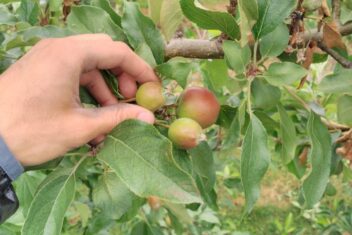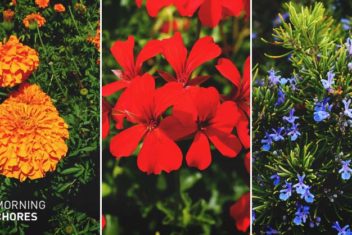Are you heading out of town for a few days and need a way to keep your plants watered? Would you like to find an economical DIY option?
I have you covered! I’m going to bring you some of the easiest and most affordable DIY automatic watering systems available.
I’ll also share a few of the cheaper store-bought options too, in case you don’t have time to DIY before your big vacation.
I struggle with taking vacations because I know the amount of work I’ve put into my property. Sadly, it isn’t the larger gardens that usually suffer from your absence because they have more soil to pull from.
Instead, it’s the window boxes, hanging baskets, smaller gardens, and house plants that suffer. Keep your smaller plants from feeling the strain of your absence by using one of these easy DIY automatic watering systems:
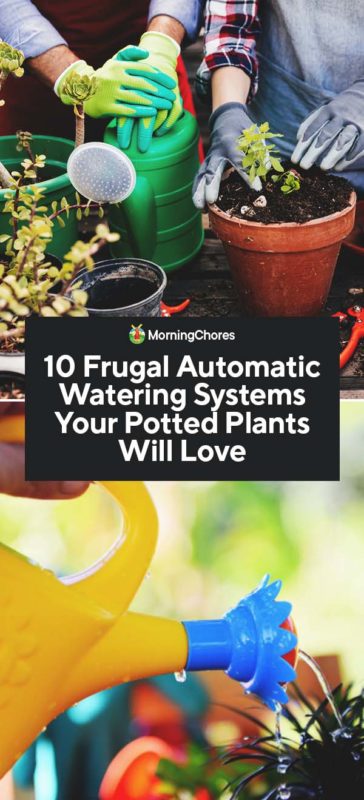
1. Plastic Bag Automatic Watering Systems
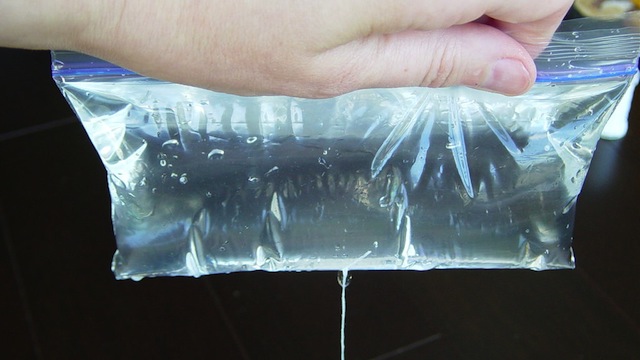
Let’s say you’re working on a tight budget and don’t wish to spend a fortune on a self-watering set-up for only a few houseplants.
There comes the point when you must ask yourself, is it cheaper to let my plants die and repurchase them when I get back?
Thankfully, you won’t have to make this horrible decision with this unique self-watering idea. Fill a Ziplock bag with water and seal it.
Thread a needle with a piece of string. Hang the bag over the plant and insert the needle into the bottom of the bag.
The thread should be placed in the soil. As the soil dries, the string will serve as a wick and distribute water from the bag.
2. DIY Olla
Have you ever heard of an olla (pronounced ol-ya?) They’re usually unglazed clay pots which are buried in the ground near your crops.
Because they’re unglazed, when the soil is dry, water seeps through the walls of the clay pot and gives the plants as much or little water as they need to prosper.
This sounds like a great idea, but you’re looking for something less expensive than purchasing a clay pot for each house plant, outdoor planter, or a small garden.
You can easily make your own ollas with a small plastic container (such as a milk jug), a plastic water bottle, or even a PVC pipe. Drill holes on the sides and bottom of the plastic container.
Place it in the ground or planter with only enough sticking out of the soil to give you access to fill it with water. When the plant needs water, the moisture will seep through the holes.
3. Above Ground Water Bottle
If you’ve gardened for any length of time, you’ve most likely seen watering globes. They can be purchased (and we’ll talk about this a little further down in the article), but they can also be made.
Save your plastic water bottles or 2-liter soda bottles with their lids. Clean the bottles thoroughly before using them for this project.
Drill small holes into the lid of the bottle and cut the bottom portion of the bottle off.
Turn the bottle upside down to where the lid is pressed into the soil and make sure it has enough soil around it to support the bottle.
Fill the bottle with water, and it will gently drip water into the soil as needed.
4. DIY Attached Olla System
Do you have ollas already or have you decided to create a few automatic watering systems from the idea above?
Yet, you’re concerned they’ll run out of water before you return. You can create a DIY automatic watering system that will refill your ollas as well.
Bury the ollas in the planters or your garden. Have a freestanding water source such as a rainwater collection barrel or even a 5-gallon bucket filled with water.
You can use drip irrigation emitters to run to each of the ollas. The water source will gently drip the water into the ollas and help to ensure your plants don’t go without water, but they shouldn’t be overwatered either with this type of set-up.
5. DIY Wicking System
This idea is ideal for those with numerous houseplants, and they’re concerned they’ll come home to nothing more than dried up twigs.
Place a pot of water on a stool and run a wicking material from the pot to each house plant. Place the material into the soil.
The soil will pull water from the wick, which will absorb water from the pots. This will help ensure when you come home, your plants will be as happy and healthy as they were before you left.
6. Hydroponics
Are you someone who travels frequently, but you still wish to grow a garden? If not being home to water regularly makes you feel as though gardening couldn’t be for you, consider hydroponic gardening.
It’s a style of gardening where there’s no soil. Instead, plants grow in a nutrient-rich liquid solution. Hydroponics is an investment and does require a great deal of studying.
Though it has been around for quite some time, it’s different than most other styles of gardening.
Hydroponics could also work for the gardener who likes to take summer vacations. Instead of fretting over how to get water to your plants automatically when you’re gone, consider a different gardening method.
7. DIY Self-Watering Grow Table
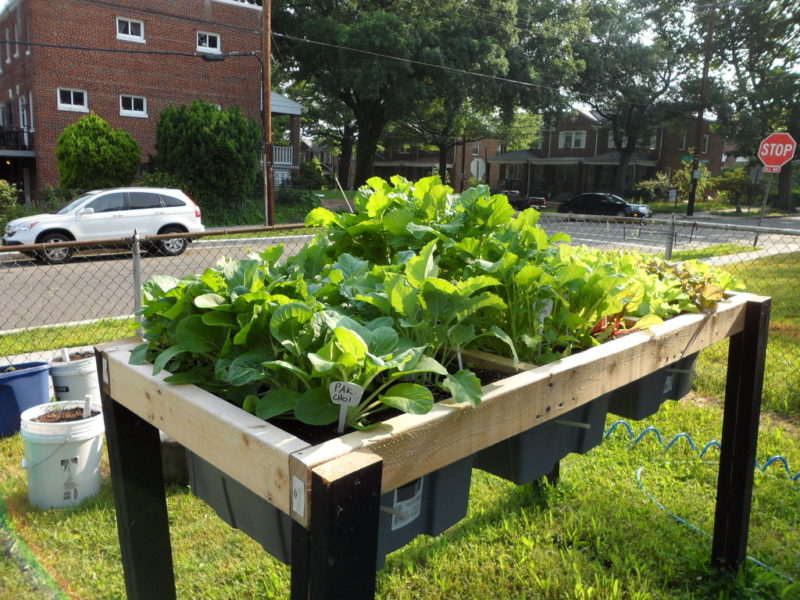
Are you short on space for a garden and now finding you don’t have a way to water the plants you grow?
Have you considered a salad table? They’re fantastic little tables which are basically a container garden on legs.
Yet, other tables are deeper and can sustain larger plants. Some tables are even self-watering which would lessen your workload and make it feasible for you to be gone for longer periods when necessary.
8. Watering Globes
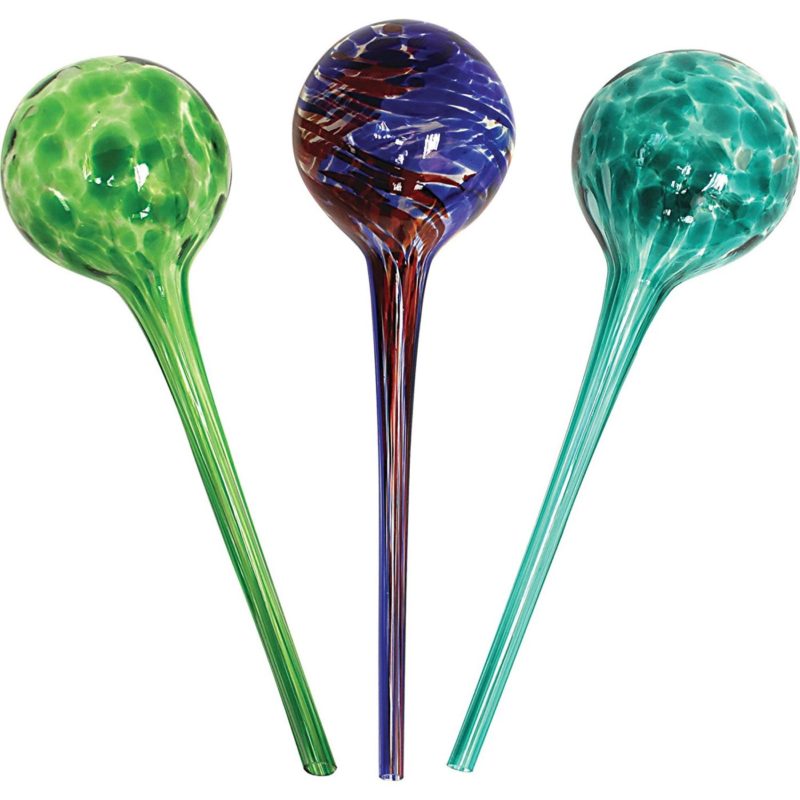
If you’re anything like me, you’re a busy person and tend to get overwhelmed when you’re planning a trip.
It seems there’s a lot of items on the to-do list to prepare to leave. This leads to some of the smaller items slipping through my grasp until the last minute.
One of the smaller items on the list could be how to water your houseplants while you’re away. If you don’t have time to DIY a system, consider purchasing watering globes.
You fill the globes with water, shove them into the soil, and let them do their job while you’re away. Not to mention, they look pretty too.
9. Wine Bottle Watering System
Do you enjoy a good bottle of wine from time to time? Do you make your own wine? If you fall in either of these categories, chances are you have leftover wine bottles.
Instead of tossing them in the garbage or the recycling bin, utilize them to water your plants. Place a screw top lid on the top of the wine bottle.
Drill holes into the lid and fill the wine bottle with water. Place the bottle, neck first, into the soil. As the soil needs water, it will seep through the holes of the bottle.
This will put your excess wine bottles to good use and keep your plants well-watered without daily watering by you.
10. Watering Spikes
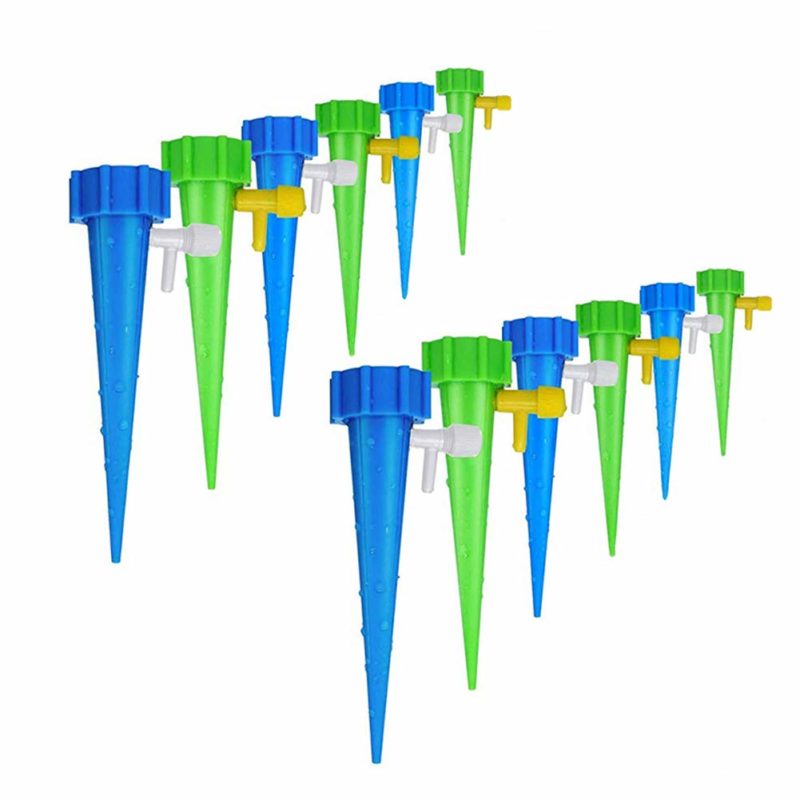
If you’d prefer purchasing automatic watering systems but don’t want to spend an arm and leg, you should consider watering spikes.
These spikes work well with 2-liter plastic bottles, water bottles, and wine bottles. If you have the bottle but didn’t keep the lids on hand, consider purchasing the watering spikes.
They slide into the bottle and provide the suction necessary to keep the water in the container.
However, they have a nozzle that gently drips water into your plants, keeping them moist without overwatering the plants.
You can purchase plastic watering spikes or terra cotta watering spikes. The terra cotta allows the water to be dispersed through the walls of the spikes.
Yet, the plastic spikes perform a dripping action to keep the plants watered adequately.
You now have 10 different options for frugal and (mostly) DIY automatic watering systems. Hopefully, this will lessen your load when watering your plants and give you peace of mind when you’re traveling.
What I’d suggest is to pick one of these automatic watering systems that suit you, and set it up long before your departure. Monitor it to check it’s efficiency, and then you can go on holiday with true peace of mind. With the right automatic watering set-up, your plants should thrive.
